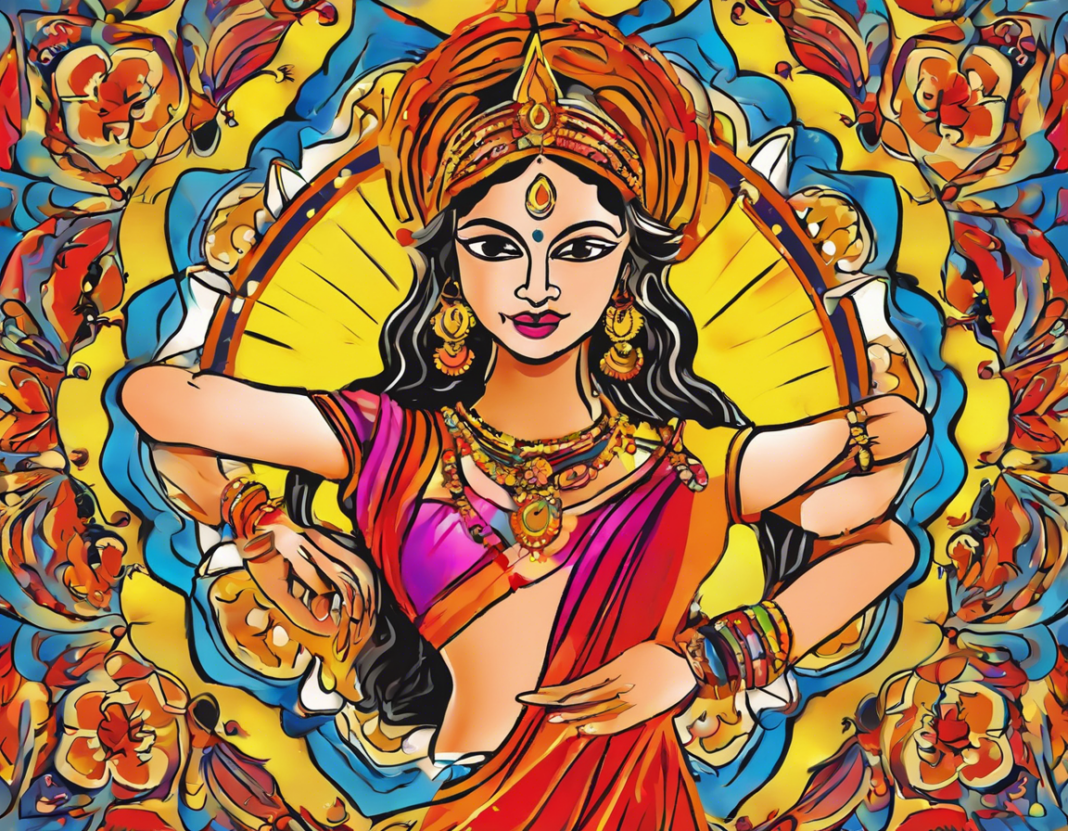Introduction
Navratri, a major Hindu festival celebrated over a period of nine nights, holds immense cultural and spiritual significance. It is a time of joyous festivities, vibrant dance performances, and beautiful traditional attire. Navratri is observed in various regions of India and by the Indian diaspora worldwide. Each region has its unique way of celebrating Navratri, but the essence of the festival remains the same – the triumph of good over evil.
History and Significance of Navratri
Navratri translates to “nine nights” in Sanskrit, and it is dedicated to worshiping the divine feminine in the form of Goddess Durga. The festival symbolizes the victory of Goddess Durga over the demon Mahishasura, signifying the triumph of good over evil. Each day of Navratri is associated with different forms of the Goddess, and devotees observe fasts, perform rituals, and participate in colorful dances like Garba and Dandiya Raas.
The Colours of Navratri
Navratri is renowned for its vibrant and colorful celebrations. Each day of the festival is associated with a specific color, and wearing that color is considered auspicious. The colors of Navratri embody different aspects of life and hold symbolic importance:
- Yellow: Symbolizes happiness and energy, usually worn on the first day.
- Green: Represents new beginnings and growth, worn on the second day.
- Grey: Signifies strength and stability, associated with the third day.
- Orange: Represents joy and creativity, worn on the fourth day.
- White: Symbolizes peace and purity, associated with the fifth day.
- Red: Represents power and passion, worn on the sixth day.
- Royal Blue: Symbolizes tranquility and infinity, associated with the seventh day.
- Pink: Represents hope and positivity, worn on the eighth day.
- Purple: Signifies wisdom and royalty, associated with the ninth day.
How to Embrace the Colors of Navratri
Navratri enthusiasts can incorporate the colors of the festival in various aspects of their lives. Here are some creative ways to embrace the vibrant colors of Navratri:
Fashion and Attire:
- Dressing up in the specific color of the day is a common practice during Navratri. Women often wear traditional attire like Chaniya Choli or sarees in the designated color, while men opt for Kurtas or traditional shirts.
- Accessories like bangles, earrings, scarves, and turbans can also be coordinated with the daily color theme.
- Applying matching eye makeup or nail polish adds a touch of festivity to the ensemble.
Home Decor:
- Adorning your home with decorations in the daily color theme enhances the festive ambiance. Use drapes, flowers, cushions, and artworks that reflect the specific color of the day.
- Rangoli designs incorporating the daily color scheme are a popular way to bring artistic vibrancy to your living spaces.
- Lighting up your home with colorful lanterns or candles in the designated hue creates a warm and inviting atmosphere.
Culinary Delights:
- Prepare and savor traditional dishes that are visually appealing and match the color of the day. For example, on the day associated with the color green, dishes like spinach curry or mint chutney can be served.
- Experiment with food coloring to create desserts or beverages that mirror the festive colors of Navratri.
Community Celebrations:
- Participate in Navratri events like Garba or Dandiya nights where revelers dress up in the daily color theme, creating a kaleidoscope of hues on the dance floor.
- Join social gatherings or Navratri melas where the atmosphere is alive with music, dance, and colorful decorations.
Spiritual Connection:
- Meditating on the significance of each color and its representation in your life can deepen your spiritual experience during Navratri.
- Decorating your altar or sacred space with items in the daily color invokes the divine qualities associated with that hue.
FAQs (Frequently Asked Questions)
- What is the significance of wearing specific colors during Navratri?
-
Wearing specific colors during Navratri is believed to resonate with the energy of that particular day and invoke the divine attributes associated with the color.
-
Can I mix and match colors during Navratri or should I strictly stick to the daily color theme?
-
While sticking to the designated color of the day is traditional, you can always add complementary colors to your outfit or decorations to create a harmonious look.
-
Are there any traditional rituals or customs observed during Navratri apart from wearing colors?
-
Yes, fasting, performing puja (worship), singing devotional songs, and participating in dance forms like Garba and Dandiya are integral parts of Navratri celebrations.
-
How can I involve children in celebrating Navratri through colors?
-
Encourage children to dress up in the daily color theme, engage in art and craft activities related to the festival colors, and involve them in preparing color-coordinated snacks or desserts.
-
What are some easy ways to incorporate Navratri colors in my daily life if I’m unable to attend festive events?
- You can wear clothes in the daily color, decorate your workspace or home with items in the specific hue, cook meals that reflect the color theme, and engage in personal reflections on the symbolic significance of each color.
Conclusion
Navratri encapsulates a rich tapestry of colors, each symbolizing unique virtues and qualities. Embracing these vibrant colors not only adds a visual spectacle to the festivities but also connects individuals to the deeper spiritual essence of the festival. By incorporating the colors of Navratri in fashion, decor, cuisine, community celebrations, and spiritual practices, participants can immerse themselves in the joyous spirit and profound significance of this auspicious occasion. Let the hues of Navratri illuminate your life with positivity, creativity, and devotion throughout the nine nights of revelry and reverence.
